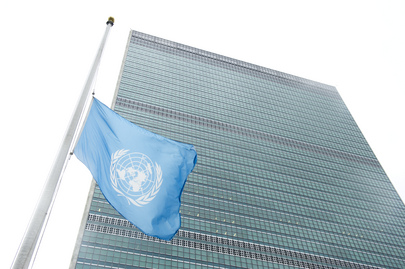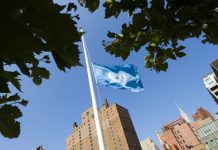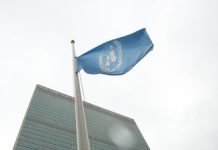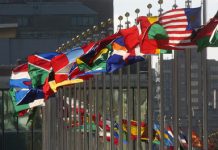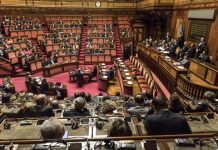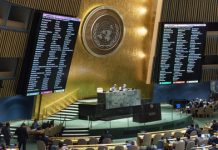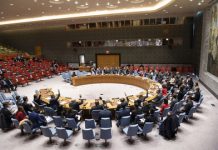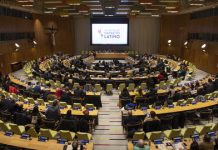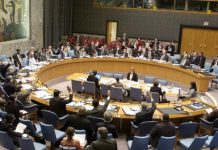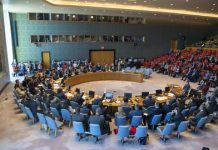“The purpose was to transform the negative energy of destruction into the positive energy of creation,” said Ukrainian designer Stanislav Drokin, who turns shrapnel into fine jewellery from his whimsical, functional home studio in war-torn Kharkiv.
As the world marks the International Day for Mine Awareness, observed annually on 4 April, ongoing demining initiatives are painstakingly removing and safely disposing unexploded weapons left behind on battlefields while artists like Mr. Drokin are crafting some of these fragments of war into one-of-a-kind jewellery, ornaments and sculptures.
For designers, there is plenty of material to work with.
From trenches to trinkets
Today, tens of millions of these deadly weapons remain scattered in former battle zones across the world long after the conflicts have ended.
Laos and Ukraine have among the world’s highest concentrations of unexploded ordnance. In Laos alone, only one per cent of the estimated 80 million now banned cluster bombs dropped during the Viet Nam War more than half a century ago have been safely deactivated and removed.
Unexploded ordnance continues to kill people around the world despite the history of mine action showing hard-won progress, according to UNMAS, the UN agency that runs demining operations, from Gaza to Ukraine.
In Ukraine, Mr. Drokin’s loft is both his workshop and home, where the renowned artist and university lecturer tells the story of war using shrapnel fragments brought to him by friends, colleagues, volunteers and military personnel following Russia’s full-scale invasion in February 2022.
“At the very beginning of the war, my creative workshop became a temporary warehouse for volunteers of the Kharkiv military hospital,” Mr. Drokin said.
A sign in Ukraine warns of landmines.
Portable stories of wartime Ukraine
Wondering how he could help Ukrainians when his frontline city is under constant artillery shelling, Mr. Drokin started working on the first of several collections in early May 2022.
Since then, he launched the Forget-me-not sculpture project, shaped from shell fragments and stylised titanium flowers, one of which sold for more than $14,000 at Sotheby’s in Geneva, all of which went to Lviv-based Superhumans, a centre serving adults and children maimed as a result of the war.
Next came the Revival collection, which unfolded after Mr. Drokin was contacted by Elizabeth Suda, founder of Article 22, a New York startup that sells pieces made of bomb remnants and supports demining in the territories contaminated by the tools of war.
“Pieces from the collection are symbols aimed at preserving information about tragedies, destruction and grief that wars bring in the memory of mankind,” Mr. Drokin said.
Designer Stanislav Drokin is interviewed by a local news team in Kharkiv, Ukraine.
‘Every piece tells a story’
At the Pen and Brush Gallery in New York’s trendy Flatiron neighbourhood, bracelets made from cluster bombs jangle on the arms of Kendall Silwonuk, who is setting up a pop-up shop with an array of Mr. Dorkin’s necklaces and other Article 22 items.
“Every piece tells a story,” Ms. Silwonuk said.
Holding up a heavy wooden block that Laotian artisans use to make bracelets, she explained the process. Artisans collect aluminium bomb casings from demining operations, melt them down and pour the liquified substance into heavy wood block molds. Once cooled, out pops a bracelet.
She said Article 22 supports initiatives to help communities to rebuild their lives, including through the US-based Legacy of War Foundation, founded by photojournalist Giles Duley, a triple amputee following injuries caused by an improvised explosive device in Afghanistan in 2011 and the first UN Global Advocate for persons with disabilities in conflict and peacebuilding situations.
Kendall Silwonuk at an Article 22 pop-up shop in New York with an array of jewellery made of remnants of war.
‘Conscious commerce’
In Laos, Article 22’s Ms. Suda met with artisans crafting spoons out of cluster bomb remnants in the early 2000s and was determined to bring their skills and story to a wider audience.
She said the company’s name comes from the Universal Declaration of Human Rights, in which Article 22 states that “everyone, as a member of society, has the right to social security and is entitled to realisation, through national effort and international cooperation and in accordance with the organization and resources of each State, of the economic, social and cultural rights indispensable for his dignity and the free development of his personality.”
“This is a humanitarian issue that the public can be involved in by being first aware by supporting organizations that work to clear unexploded bombs from the land and by supporting any organization or business that is doing this work through a conscious commerce,” she said.
For the Laotian artisans working with Article 22, the collaboration has meant more income and cleared minefields now used to grow rice.
A local rice farmer in Laos.
Blending chaos with harmony
Back in Kharkiv, Mr. Drokin is now sketching new designs using precious coloured stones and diamonds to “combine them with fragments created by the crazy energy of the explosion” for his growing audience. That includes presidents, volunteers, journalists, mayors, doctors, philanthropists and military heroes, with some pieces gracing private collections, from the National Museum of the History of Ukraine to the East Wing of the White House in Washington.
“I love to combine harmony and chaos, use the emotions of colour and its combinations and emphasise the images and forms created by man and nature,” he said. “As a lecturer, I want to pass on knowledge and accumulated experience to students to bring a sense of responsibility, harmony and peace to the younger generation.”
Does he have a favourite piece?
“It will be the last piece I create after the war, when the long-awaited and just peace comes, people stop dying and the contaminated land of Ukraine is cleared of unexploded mines, missiles and shells,” Mr. Drokin said.
While some artisans in Laos and Ukraine continue to ply a brisk trade, the trend of salvaging and recycling remnants of war into wearable art is emerging around the world.
Deminers in Bunia, the Democratic Republic of the Congo.
Here are just a few:
- In Colombia, even before the decades-old war ended, jewellery designers produced collections crafted from bullet casings, with some continuing to this day
- In Cambodia, remnants of half-century-old brass bombshells are being salvaged by an association and incorporated into jewellery to promote peace
- In the Democratic Republic of the Congo (DRC), retrieved bullet casings and AK47 machine gun are being integrated into wristwatches and wedding bands
- In Israel and Palestine, some of the tens of thousands of fallen bombs and rockets are now mezuzahs, statues, necklaces and charms
Source of original article: United Nations (news.un.org). Photo credit: UN. The content of this article does not necessarily reflect the views or opinion of Global Diaspora News (www.globaldiasporanews.net).
To submit your press release: (https://www.globaldiasporanews.com/pr).
To advertise on Global Diaspora News: (www.globaldiasporanews.com/ads).
Sign up to Global Diaspora News newsletter (https://www.globaldiasporanews.com/newsletter/) to start receiving updates and opportunities directly in your email inbox for free.


